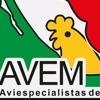Isolation and Antimicrobial Sensitivity of Mycoplasma synoviae and Mycoplasma gallisepticum from Vaccinated Hens in Mexico
Author details:





1. Ferguson-Noel, N.; Noormohammadi, A.H. Mycoplasma synoviaeInfection. In Diseases of Poultry; Swayne, D.E.,Glisson, J.R., McDougald, L.R., Nolan, L.K., Suarez, D.L., Nair, V., Eds.; John Wiley & Sons, Inc.: Ames, IA,
USA, 2013; pp. 900–906, ISBN 978-0-470-95899-5.
2. Raviv, Z.; Ley, D.H. Mycoplasma gallisepticum Infection. In Diseases of Poultry; Swayne, D.E., Glisson, J.R.,McDougald, L.R., Nolan, L.K., Suarez, D.L., Nair, V., Eds.; John Wiley & Sons, Inc.: Ames, IA, USA, 2013; pp. 877–893, ISBN 978-0-470-95899-5.
3. Kursa, O.; Pakuła, A.; Tomczyk, G.; Pa´sko, S.; Sawicka, A. Eggshell apex abnormalities caused by twodifferent Mycoplasma synoviae genotypes and evaluation of eggshell anomalies by full-field optical coherence tomography. BMC Vet. Res. 2019, 15, 1. [CrossRef] [PubMed]
4. Awad, N.F.S.; Abd El-Hamid, M.I.; Hashem, Y.M.; Erfan, A.M.; Abdelrahman, B.A.; Mahmoud, H.I. Impactof single and mixed infections with Escherichia coli and Mycoplasma gallisepticum on Newcastle disease virus vaccine performance in broiler chickens: An in vivo perspective. J. Appl. Microbiol. 2019, 127, 396–405.[CrossRef] [PubMed]
5. Markham, J.F.; Morrow, C.J.; Scott, P.C.; Whithear, K.G. Safety of a Temperature-Sensitive Clone of Mycoplasmasynoviae as a Live Vaccine. Avian Dis. 1998, 42, 677. [CrossRef] [PubMed]
6. Whithear, K.; Soeripto; Harringan, K.; Ghiocas, E. Safety of temperature sensitive mutant Mycoplasmagallisepticum vaccine. Aust. Vet. J. 1990, 67, 159–165. [CrossRef] [PubMed]
7. Jordan, F.T.; Forrester, C.A.; Ripley, P.H.; Burch, D.G. In vitro and in vivo comparisons of valnemulin,tiamulin, tylosin, enrofloxacin, and lincomycin/spectinomycin against Mycoplasma gallisepticum. Avian Dis.
1998, 42, 738–745. [CrossRef]
8. Hofacre, C.L.; Fricke, J.A.; Inglis, T. Antimicrobial Drug Use in Poultry. In Antimicrobial Therapy in VeterinaryMedicine; Giguère, S., Prescott, J.F., Dowling, P.M., Eds.; Wiley Blackwell: Ames, IA, USA, 2013; pp. 569–587,ISBN 978-0-470-96302-9.
9. Ammon, H.; Wahl, M. Pharmacology of Curcuma longa. Planta Med. 1991, 57, 1–7. [CrossRef] [PubMed]
10. Lawhavinit, O.; Kongkathip, N.; Kongkathip, B. Antimicrobial activity of curcuminoids from Curcuma longaL. on pathogenic bacteria of shrimp and chicken. Kasetsart J. Nat. Sci. 2010, 44, 364–371.
11. Boeder, A.M.; Tenfen, A.; Siebert, D.A.; de Almeida, C.L.B.; Firmo, C.R.M.; Scharf, D.R.; Micke, G.A.;Siminionatto, E.L.; de Cordova, C.M.M.; Guedes, A. Anti-mycoplasma activity of Curcuma longa extracts and your isolated compound, the curcumin. Rev. Fitos 2018, 12. [CrossRef]
12. Charlton, B.R.; Bickford, A.A.; Walker, R.L.; Yamamoto, R. Complementary Randomly Amplified PolymorphicDNA (RAPD) Analysis Patterns and Primer Sets to Differentiate Mycoplasma Gallisepticum Strains. J. Vet.
Diagn. Investig. 1999, 11, 158–161. [CrossRef]
13. Fan, H.H.; Kleven, S.H.; Jackwood, M.W. Application of Polymerase Chain Reaction with Arbitrary Primersto Strain Identification of Mycoplasma gallisepticum. Avian Dis. 1995, 39, 729. [CrossRef]
14. Fan, H.H.; Kleven, S.H.; Jackwood, M.W. Studies of Intraspecies Heterogeneity of Mycoplasma synoviae,M. meleagridis, and M. iowae with Arbitrarily Primed Polymerase Chain Reaction. Avian Dis. 1995, 39, 766.
[CrossRef]
15. Marois, C.; Dufour-Gesbert, F.; Kempf, I. Comparison of pulsed-field gel electrophoresis with randomamplified polymorphic DNA for typing of Mycoplasma synoviae. Vet. Microbiol. 2001, 79, 1–9. [CrossRef]
16. Noormohammadi, A.H.; Jones, J.F.; Harrigan, K.E.; Whithear, K.G. Evaluation of theNon-Temperature-Sensitive Field Clonal Isolates of the Mycoplasma synoviae Vaccine Strain MS-H. Avian Dis.2003, 47, 355–360. [CrossRef]
17. King, D.D.; Kleven, S.H.; Wenger, D.M.; Anderson, D.P. Field Studies with Mycoplasma synoviae. Avian Dis.1973, 17, 722. [CrossRef] [PubMed]
18. Buim, M.R.; Mettifogo, E.; Timenetsky, J.; Kleven, S.; Ferreira, A.J.P. Epidemiological survey on Mycoplasmagallisepticum and M. synoviae by multiplex PCR in commercial poultry. Pesqui. Veterinária Bras. 2009, 29,
552–556. [CrossRef]
19. Kapetanov, M.; Orli´c, D.; Potkonjak, D.; Velhner, M.; Stojanov, I.; Milanov, D.; Stojanovic, D. Mycoplasmain poultry flocks in the year 2009 compared to the year 2000 and significance of the control measures.
Lucr. ¸Stiinłifice Med. Vet. 2010, 43, 249–253.
20. Yilmaz, F.; Timurkaan, N. Detection of Mycoplasma gallisepticum and Mycoplasma synoviae Antigens byImmunohistochemical Method in Pneumonic Broiler Chicken Lungs. J. Anim. Vet. Adv. 2011, 10, 2557–2560.
[CrossRef]
21. Landman, W.J.M. Is Mycoplasma synoviae outrunning Mycoplasma gallisepticum? A viewpoint from theNetherlands. Avian Pathol. 2014, 43, 2–8. [CrossRef]
22. Michiels, T.; Welby, S.; Vanrobaeys, M.; Quinet, C.; Rouffaer, L.; Lens, L.; Martel, A.; Butaye, P. Prevalence of Mycoplasma gallisepticum and Mycoplasma synoviae in commercial poultry, racing pigeons and wild birds in
Belgium. Avian Pathol. 2016, 45, 244–252. [CrossRef]
23. United States Department of Agriculture National Poultry Improvement Plan (NPIP). Availableonline:https://www.aphis.usda.gov/aphis/ourfocus/animalhealth/nvap/NVAPReference-Guide/Poultry/National-Poultry-Improvement-Plan (accessed on 14 September 2020).
24. Armour, N.K.; Ferguson-Noel, N. Evaluation of the egg transmission and pathogenicity of Mycoplasma gallisepticum isolates genotyped as ts-11. Avian Pathol. 2015, 44, 296–304. [CrossRef]
25. El Gazzar, M.; Laibinis, V.A.; Ferguson-Noel, N. Characterization of a ts-11–like Mycoplasma gallisepticum Isolate from Commercial Broiler Chickens. Avian Dis. 2011, 55, 569–574. [CrossRef] [PubMed]
26. Gautier-Bouchardon, A.V. Antimicrobial Resistance in Mycoplasma spp. In Antimicrobial Resistance in Bacteria from Livestock and Companion Animals; Schwarz, S., Cavaco, L.M., Shen, J., Eds.; American Society of Microbiology: Washington, DC, USA, 2018; pp. 425–446, ISBN 978-1-55581-97 -8.
27. Jordan, F.T.W. Recovery and Identification of avian Mycoplasmas. In Methods in Mycoplasmology; Tully, J.G., Razin, S., Eds.; Elsevier: New York, NY, USA, 1983; Volume II, pp. 69–79, ISBN 978-0-12-583802-3.
28. Sader, H.S. Antimicrobial resistence in Latin America. How are we? Rev. Chil. Infectol. 2002, 19, S5–S13.
[CrossRef]
29. Poveda, J.B. Biochemical Characteristics in Mycoplasma Identification. In Mycoplasma Protocols; Miles, R.,Nicholas, R., Eds.; Humana Press: Totowa, NJ, USA, 1998; pp. 69–78, ISBN 978-0-89603-525-6.
30. Ferguson-Noel, N.; Kleven, S.H. Mycoplasma Species. In A Laboratory Manual, the Isolation, Identification andCharacterization of Avian Pathogens; Williams, S.M., Dufour-Zavala, L., Jackwood, W.M., Lee, M.D., Lupiani, B.,Reed, W.M., Spackman, E., Woolcock, P.R., Eds.; American Association of Avian Pathologists: Jacksonville,FL, USA, 2016; pp. 63–70, ISBN 978-0-9789163-7-4.
31. Geary, S.J.; Forsyth, M.H.; Saoud, S.A.; Wang, G.; Berg, D.E.; Berg, C.M. Mycoplasma gallisepticum strain differentiation by arbitrary primer PCR (RAPD) fingerprinting. Mol. Cell. Probes 1994, 8, 311–316. [CrossRef]
[PubMed]
32. Food and Agriculture Organization of the United Nations; World Health Organization; International Officeof Epizootics (Eds.) Joint FAO/WHO/OIE Expert Meeting on Critically Important Antimicrobials: Report of the
FAO/WHO/OIE Expert Meeting, FAO Headquarters, Rome, Italy, 26–30 November 2007; Food and AgricultureOrganization of the United Nations: Rome, Italy, 2008; ISBN 978-92-5-106009-4.
33. Hannan, P.C.T. Guidelines and recommendations for antimicrobial minimum inhibitory concentration (MIC)testing against veterinary mycoplasma species. Vet. Res. 2000, 31, 373–395. [CrossRef] [PubMed]
34. Lysnyansky, I.; Gerchman, I.; Mikula, I.; Gobbo, F.; Catania, S.; Levisohn, S. Molecular Characterizationof Acquired Enrofloxacin Resistance in Mycoplasma synoviae Field Isolates. Antimicrob. Agents Chemother.
2013, 57, 3072–3077. [CrossRef]






















